What is Physical Therapy and Why is it Important for Seniors?
Jan 23, 2025
Jan 23, 2025



Physical therapy plays a crucial role in helping seniors recover from injuries, manage chronic conditions, and improve overall quality of life. It can significantly enhance strength, flexibility, and mobility, allowing older adults to maintain independence and reduce the risk of falls.
As our bodies change with age, physical therapy is an important tool for addressing age-related challenges and maintaining good health.
Age-Related Changes and Physical Therapy
As we age, our bodies undergo various changes that can affect our mobility and overall health:
1. Muscle Mass Decreases: Known as sarcopenia, this natural loss of muscle mass can lead to weakness and reduced mobility.
2. Bone Density Reduction: Osteoporosis becomes more common, increasing the risk of fractures.
3. Joint Stiffness: Arthritis and other conditions can cause joint pain and reduced flexibility.
4. Balance Issues: Changes in the inner ear and reduced muscle strength can affect balance and coordination.
5. Cardiovascular Changes: The heart and blood vessels become less efficient, affecting endurance and exercise capacity.
Physical therapy, however, can address these changes, helping seniors maintain their health and independence, and supporting aging in place.
Types of Physical Therapy for Seniors
Geriatric Physical Therapy
This specialized form of therapy focuses on the unique needs of aging adults. It addresses conditions such as arthritis, osteoporosis, and balance disorders, aiming to restore mobility, increase fitness levels, and reduce pain.
Geriatric physical therapists are trained to understand the complex needs of older adults and can tailor treatment plans to individual circumstances.
Key focus areas might include:
Improving balance and coordination
Enhancing strength and flexibility
Managing chronic pain
Addressing gait issues
Promoting overall wellness and independence
Orthopedic Physical Therapy
Orthopedic therapy helps treat injuries of the musculoskeletal system and aids recovery from orthopedic surgeries, such a hip or knee replacement. The goal is to restore function to muscles, bones, joints, tendons, and ligaments.
This type of therapy is particularly beneficial for seniors recovering from falls, joint replacements, or managing conditions like arthritis. Common treatments included in care plans include:
Joint mobilization techniques
Strength training exercises
Pre- and post-surgical rehabilitation
Pain management strategies
Assistive device training (e.g., walkers, canes)
Neurologic Physical Therapy
This type of therapy addresses conditions affecting the brain and nervous system, such as Alzheimer's disease, Parkinson's disease, and brain injuries. It focuses on adapting to impairments and improving quality of life.
Neurologic physical therapists work on improving motor control, coordination, and cognitive functioning. Key components of neurological physical therapy might include:
Balance and gait training
Cognitive exercises
Functional task practice
Adaptive equipment recommendations
Caregiver education and support
Cardiopulmonary Physical Therapy
Cardiopulmonary physical therapy can be crucial for those with heart or lung conditions such as, COPD, high blood pressure, vascular diseases, and heart failure.This specialization focuses on improving endurance, reducing shortness of breath, and enhancing overall cardiovascular health.
Treatment Approaches:
Breathing exercises
Cardiovascular conditioning
Energy conservation techniques
Lifestyle modification counseling
Monitored exercise programs
Benefits of Physical Therapy for Seniors
Reduced Fall Risk: Through balance training and muscle strengthening exercises, physical therapy can significantly decrease the risk of falls, a major concern for older adults. Falls are a leading cause of injury among seniors, and prevention is key to maintaining independence.
Pain Management: Therapy can help alleviate pain from chronic conditions like arthritis, improving overall comfort and mobility. By addressing the root causes of pain and providing coping strategies, physical therapy can reduce reliance on pain medications.
Improved Mobility: Customized exercise programs can enhance strength and flexibility, making daily activities easier and more comfortable. This improved mobility can lead to greater independence and a higher quality of life.
Enhanced Independence: By improving physical function, therapy helps seniors maintain their independence and quality of life. This can include everything from being able to perform daily tasks to continuing favorite hobbies and activities.
Better Mental Health: Regular physical activity and therapy can have positive effects on mental health, reducing symptoms of depression and anxiety often associated with aging and physical limitations.
Improved Cardiovascular Health: Many physical therapy programs include cardiovascular exercises, which can improve heart health, lower blood pressure, and enhance overall endurance.
Faster Recovery from Surgery: For seniors undergoing surgeries, pre- and post-operative physical therapy can significantly speed up recovery time and improve outcomes.
Management of Chronic Conditions: Physical therapy can help manage symptoms of chronic conditions such as diabetes, COPD, and heart disease, improving overall health and reducing the risk of complications.
Getting Started with Physical Therapy
If you're a senior considering physical therapy, here are some steps to get started:
1. Consult with Your Healthcare Provider: Discuss your physical concerns and get a referral if necessary. Your doctor can provide valuable insights into your specific health needs.
2. Choose the Right Physical Therapist: Look for a therapist experienced in geriatric care. Consider factors like location, specialization, and insurance coverage.
3. Prepare for Your First Appointment:
Bring a list of your current medications
Wear comfortable clothing that allows easy movement
Be ready to discuss your medical history and current symptoms
4. Be Open and Honest: During your initial assessment, be open about your health concerns, pain levels, and goals. This will help your therapist create an effective treatment plan.
5. Follow Your Treatment Plan: Consistency is key in physical therapy. Follow your therapist's recommendations and exercise plan, both during sessions and at home.
6. Track Your Progress: Keep a journal of your improvements and any challenges. This can help motivate you and provide valuable feedback to your therapist.
7. Stay Positive and Patient: Progress may be gradual, but the benefits are significant. Celebrate small victories and stay committed to your therapy goals.
8. Communicate with Your Therapist: If you experience pain or discomfort during exercises, or if you have concerns about your progress, communicate this to your therapist.
Overcoming Common Barriers to Physical Therapy
Many seniors face challenges when it comes to starting or maintaining a physical therapy regimen. Here are some common barriers and strategies to overcome them:
Fear of Pain or Injury
Communicate your fears to your therapist
Start with gentle exercises and gradually increase intensity
Understand the difference between therapeutic discomfort and harmful pain
Transportation Issues
Look for physical therapy clinics that offer transportation services or ask a caregiver or family member for help
Consider home-based physical therapy options
Explore telehealth physical therapy sessions for some aspects of treatment
Cost Concerns
Check your insurance coverage for physical therapy
Inquire about sliding scale fees or payment plans
Look into community programs or senior centers that offer low-cost therapy options
Lack of Motivation
Set realistic, achievable goals
Find a therapy buddy or join group therapy sessions
Focus on the positive outcomes and improved quality of life
Time Constraints
Integrate therapy exercises into your daily routine
Break exercises into smaller, manageable sessions throughout the day
Prioritize therapy as an essential part of your health maintenance
Conclusion
It's never too late to start physical therapy. With the right guidance and commitment, seniors can experience remarkable improvements in their physical health and overall well-being. Whether recovering from an injury, managing a chronic condition, or simply aiming to enhance mobility and independence, physical therapy offers a path to a more active and fulfilling life in your senior years.
By embracing physical therapy, seniors can take proactive steps towards maintaining their health, independence, and quality of life. It's an investment in your future that can yield significant returns in terms of physical ability, pain management, and overall well-being.
Further Resources
Read more about Physical Therapy on the American Phyiscal Therapy Association website: https://www.choosept.com/why-physical-therapy/about-physical-therapists-and-physical-therapist-assistants
Physical therapy plays a crucial role in helping seniors recover from injuries, manage chronic conditions, and improve overall quality of life. It can significantly enhance strength, flexibility, and mobility, allowing older adults to maintain independence and reduce the risk of falls.
As our bodies change with age, physical therapy is an important tool for addressing age-related challenges and maintaining good health.
Age-Related Changes and Physical Therapy
As we age, our bodies undergo various changes that can affect our mobility and overall health:
1. Muscle Mass Decreases: Known as sarcopenia, this natural loss of muscle mass can lead to weakness and reduced mobility.
2. Bone Density Reduction: Osteoporosis becomes more common, increasing the risk of fractures.
3. Joint Stiffness: Arthritis and other conditions can cause joint pain and reduced flexibility.
4. Balance Issues: Changes in the inner ear and reduced muscle strength can affect balance and coordination.
5. Cardiovascular Changes: The heart and blood vessels become less efficient, affecting endurance and exercise capacity.
Physical therapy, however, can address these changes, helping seniors maintain their health and independence, and supporting aging in place.
Types of Physical Therapy for Seniors
Geriatric Physical Therapy
This specialized form of therapy focuses on the unique needs of aging adults. It addresses conditions such as arthritis, osteoporosis, and balance disorders, aiming to restore mobility, increase fitness levels, and reduce pain.
Geriatric physical therapists are trained to understand the complex needs of older adults and can tailor treatment plans to individual circumstances.
Key focus areas might include:
Improving balance and coordination
Enhancing strength and flexibility
Managing chronic pain
Addressing gait issues
Promoting overall wellness and independence
Orthopedic Physical Therapy
Orthopedic therapy helps treat injuries of the musculoskeletal system and aids recovery from orthopedic surgeries, such a hip or knee replacement. The goal is to restore function to muscles, bones, joints, tendons, and ligaments.
This type of therapy is particularly beneficial for seniors recovering from falls, joint replacements, or managing conditions like arthritis. Common treatments included in care plans include:
Joint mobilization techniques
Strength training exercises
Pre- and post-surgical rehabilitation
Pain management strategies
Assistive device training (e.g., walkers, canes)
Neurologic Physical Therapy
This type of therapy addresses conditions affecting the brain and nervous system, such as Alzheimer's disease, Parkinson's disease, and brain injuries. It focuses on adapting to impairments and improving quality of life.
Neurologic physical therapists work on improving motor control, coordination, and cognitive functioning. Key components of neurological physical therapy might include:
Balance and gait training
Cognitive exercises
Functional task practice
Adaptive equipment recommendations
Caregiver education and support
Cardiopulmonary Physical Therapy
Cardiopulmonary physical therapy can be crucial for those with heart or lung conditions such as, COPD, high blood pressure, vascular diseases, and heart failure.This specialization focuses on improving endurance, reducing shortness of breath, and enhancing overall cardiovascular health.
Treatment Approaches:
Breathing exercises
Cardiovascular conditioning
Energy conservation techniques
Lifestyle modification counseling
Monitored exercise programs
Benefits of Physical Therapy for Seniors
Reduced Fall Risk: Through balance training and muscle strengthening exercises, physical therapy can significantly decrease the risk of falls, a major concern for older adults. Falls are a leading cause of injury among seniors, and prevention is key to maintaining independence.
Pain Management: Therapy can help alleviate pain from chronic conditions like arthritis, improving overall comfort and mobility. By addressing the root causes of pain and providing coping strategies, physical therapy can reduce reliance on pain medications.
Improved Mobility: Customized exercise programs can enhance strength and flexibility, making daily activities easier and more comfortable. This improved mobility can lead to greater independence and a higher quality of life.
Enhanced Independence: By improving physical function, therapy helps seniors maintain their independence and quality of life. This can include everything from being able to perform daily tasks to continuing favorite hobbies and activities.
Better Mental Health: Regular physical activity and therapy can have positive effects on mental health, reducing symptoms of depression and anxiety often associated with aging and physical limitations.
Improved Cardiovascular Health: Many physical therapy programs include cardiovascular exercises, which can improve heart health, lower blood pressure, and enhance overall endurance.
Faster Recovery from Surgery: For seniors undergoing surgeries, pre- and post-operative physical therapy can significantly speed up recovery time and improve outcomes.
Management of Chronic Conditions: Physical therapy can help manage symptoms of chronic conditions such as diabetes, COPD, and heart disease, improving overall health and reducing the risk of complications.
Getting Started with Physical Therapy
If you're a senior considering physical therapy, here are some steps to get started:
1. Consult with Your Healthcare Provider: Discuss your physical concerns and get a referral if necessary. Your doctor can provide valuable insights into your specific health needs.
2. Choose the Right Physical Therapist: Look for a therapist experienced in geriatric care. Consider factors like location, specialization, and insurance coverage.
3. Prepare for Your First Appointment:
Bring a list of your current medications
Wear comfortable clothing that allows easy movement
Be ready to discuss your medical history and current symptoms
4. Be Open and Honest: During your initial assessment, be open about your health concerns, pain levels, and goals. This will help your therapist create an effective treatment plan.
5. Follow Your Treatment Plan: Consistency is key in physical therapy. Follow your therapist's recommendations and exercise plan, both during sessions and at home.
6. Track Your Progress: Keep a journal of your improvements and any challenges. This can help motivate you and provide valuable feedback to your therapist.
7. Stay Positive and Patient: Progress may be gradual, but the benefits are significant. Celebrate small victories and stay committed to your therapy goals.
8. Communicate with Your Therapist: If you experience pain or discomfort during exercises, or if you have concerns about your progress, communicate this to your therapist.
Overcoming Common Barriers to Physical Therapy
Many seniors face challenges when it comes to starting or maintaining a physical therapy regimen. Here are some common barriers and strategies to overcome them:
Fear of Pain or Injury
Communicate your fears to your therapist
Start with gentle exercises and gradually increase intensity
Understand the difference between therapeutic discomfort and harmful pain
Transportation Issues
Look for physical therapy clinics that offer transportation services or ask a caregiver or family member for help
Consider home-based physical therapy options
Explore telehealth physical therapy sessions for some aspects of treatment
Cost Concerns
Check your insurance coverage for physical therapy
Inquire about sliding scale fees or payment plans
Look into community programs or senior centers that offer low-cost therapy options
Lack of Motivation
Set realistic, achievable goals
Find a therapy buddy or join group therapy sessions
Focus on the positive outcomes and improved quality of life
Time Constraints
Integrate therapy exercises into your daily routine
Break exercises into smaller, manageable sessions throughout the day
Prioritize therapy as an essential part of your health maintenance
Conclusion
It's never too late to start physical therapy. With the right guidance and commitment, seniors can experience remarkable improvements in their physical health and overall well-being. Whether recovering from an injury, managing a chronic condition, or simply aiming to enhance mobility and independence, physical therapy offers a path to a more active and fulfilling life in your senior years.
By embracing physical therapy, seniors can take proactive steps towards maintaining their health, independence, and quality of life. It's an investment in your future that can yield significant returns in terms of physical ability, pain management, and overall well-being.
Further Resources
Read more about Physical Therapy on the American Phyiscal Therapy Association website: https://www.choosept.com/why-physical-therapy/about-physical-therapists-and-physical-therapist-assistants
Physical therapy plays a crucial role in helping seniors recover from injuries, manage chronic conditions, and improve overall quality of life. It can significantly enhance strength, flexibility, and mobility, allowing older adults to maintain independence and reduce the risk of falls.
As our bodies change with age, physical therapy is an important tool for addressing age-related challenges and maintaining good health.
Age-Related Changes and Physical Therapy
As we age, our bodies undergo various changes that can affect our mobility and overall health:
1. Muscle Mass Decreases: Known as sarcopenia, this natural loss of muscle mass can lead to weakness and reduced mobility.
2. Bone Density Reduction: Osteoporosis becomes more common, increasing the risk of fractures.
3. Joint Stiffness: Arthritis and other conditions can cause joint pain and reduced flexibility.
4. Balance Issues: Changes in the inner ear and reduced muscle strength can affect balance and coordination.
5. Cardiovascular Changes: The heart and blood vessels become less efficient, affecting endurance and exercise capacity.
Physical therapy, however, can address these changes, helping seniors maintain their health and independence, and supporting aging in place.
Types of Physical Therapy for Seniors
Geriatric Physical Therapy
This specialized form of therapy focuses on the unique needs of aging adults. It addresses conditions such as arthritis, osteoporosis, and balance disorders, aiming to restore mobility, increase fitness levels, and reduce pain.
Geriatric physical therapists are trained to understand the complex needs of older adults and can tailor treatment plans to individual circumstances.
Key focus areas might include:
Improving balance and coordination
Enhancing strength and flexibility
Managing chronic pain
Addressing gait issues
Promoting overall wellness and independence
Orthopedic Physical Therapy
Orthopedic therapy helps treat injuries of the musculoskeletal system and aids recovery from orthopedic surgeries, such a hip or knee replacement. The goal is to restore function to muscles, bones, joints, tendons, and ligaments.
This type of therapy is particularly beneficial for seniors recovering from falls, joint replacements, or managing conditions like arthritis. Common treatments included in care plans include:
Joint mobilization techniques
Strength training exercises
Pre- and post-surgical rehabilitation
Pain management strategies
Assistive device training (e.g., walkers, canes)
Neurologic Physical Therapy
This type of therapy addresses conditions affecting the brain and nervous system, such as Alzheimer's disease, Parkinson's disease, and brain injuries. It focuses on adapting to impairments and improving quality of life.
Neurologic physical therapists work on improving motor control, coordination, and cognitive functioning. Key components of neurological physical therapy might include:
Balance and gait training
Cognitive exercises
Functional task practice
Adaptive equipment recommendations
Caregiver education and support
Cardiopulmonary Physical Therapy
Cardiopulmonary physical therapy can be crucial for those with heart or lung conditions such as, COPD, high blood pressure, vascular diseases, and heart failure.This specialization focuses on improving endurance, reducing shortness of breath, and enhancing overall cardiovascular health.
Treatment Approaches:
Breathing exercises
Cardiovascular conditioning
Energy conservation techniques
Lifestyle modification counseling
Monitored exercise programs
Benefits of Physical Therapy for Seniors
Reduced Fall Risk: Through balance training and muscle strengthening exercises, physical therapy can significantly decrease the risk of falls, a major concern for older adults. Falls are a leading cause of injury among seniors, and prevention is key to maintaining independence.
Pain Management: Therapy can help alleviate pain from chronic conditions like arthritis, improving overall comfort and mobility. By addressing the root causes of pain and providing coping strategies, physical therapy can reduce reliance on pain medications.
Improved Mobility: Customized exercise programs can enhance strength and flexibility, making daily activities easier and more comfortable. This improved mobility can lead to greater independence and a higher quality of life.
Enhanced Independence: By improving physical function, therapy helps seniors maintain their independence and quality of life. This can include everything from being able to perform daily tasks to continuing favorite hobbies and activities.
Better Mental Health: Regular physical activity and therapy can have positive effects on mental health, reducing symptoms of depression and anxiety often associated with aging and physical limitations.
Improved Cardiovascular Health: Many physical therapy programs include cardiovascular exercises, which can improve heart health, lower blood pressure, and enhance overall endurance.
Faster Recovery from Surgery: For seniors undergoing surgeries, pre- and post-operative physical therapy can significantly speed up recovery time and improve outcomes.
Management of Chronic Conditions: Physical therapy can help manage symptoms of chronic conditions such as diabetes, COPD, and heart disease, improving overall health and reducing the risk of complications.
Getting Started with Physical Therapy
If you're a senior considering physical therapy, here are some steps to get started:
1. Consult with Your Healthcare Provider: Discuss your physical concerns and get a referral if necessary. Your doctor can provide valuable insights into your specific health needs.
2. Choose the Right Physical Therapist: Look for a therapist experienced in geriatric care. Consider factors like location, specialization, and insurance coverage.
3. Prepare for Your First Appointment:
Bring a list of your current medications
Wear comfortable clothing that allows easy movement
Be ready to discuss your medical history and current symptoms
4. Be Open and Honest: During your initial assessment, be open about your health concerns, pain levels, and goals. This will help your therapist create an effective treatment plan.
5. Follow Your Treatment Plan: Consistency is key in physical therapy. Follow your therapist's recommendations and exercise plan, both during sessions and at home.
6. Track Your Progress: Keep a journal of your improvements and any challenges. This can help motivate you and provide valuable feedback to your therapist.
7. Stay Positive and Patient: Progress may be gradual, but the benefits are significant. Celebrate small victories and stay committed to your therapy goals.
8. Communicate with Your Therapist: If you experience pain or discomfort during exercises, or if you have concerns about your progress, communicate this to your therapist.
Overcoming Common Barriers to Physical Therapy
Many seniors face challenges when it comes to starting or maintaining a physical therapy regimen. Here are some common barriers and strategies to overcome them:
Fear of Pain or Injury
Communicate your fears to your therapist
Start with gentle exercises and gradually increase intensity
Understand the difference between therapeutic discomfort and harmful pain
Transportation Issues
Look for physical therapy clinics that offer transportation services or ask a caregiver or family member for help
Consider home-based physical therapy options
Explore telehealth physical therapy sessions for some aspects of treatment
Cost Concerns
Check your insurance coverage for physical therapy
Inquire about sliding scale fees or payment plans
Look into community programs or senior centers that offer low-cost therapy options
Lack of Motivation
Set realistic, achievable goals
Find a therapy buddy or join group therapy sessions
Focus on the positive outcomes and improved quality of life
Time Constraints
Integrate therapy exercises into your daily routine
Break exercises into smaller, manageable sessions throughout the day
Prioritize therapy as an essential part of your health maintenance
Conclusion
It's never too late to start physical therapy. With the right guidance and commitment, seniors can experience remarkable improvements in their physical health and overall well-being. Whether recovering from an injury, managing a chronic condition, or simply aiming to enhance mobility and independence, physical therapy offers a path to a more active and fulfilling life in your senior years.
By embracing physical therapy, seniors can take proactive steps towards maintaining their health, independence, and quality of life. It's an investment in your future that can yield significant returns in terms of physical ability, pain management, and overall well-being.
Further Resources
Read more about Physical Therapy on the American Phyiscal Therapy Association website: https://www.choosept.com/why-physical-therapy/about-physical-therapists-and-physical-therapist-assistants
More about senior health
More about senior health
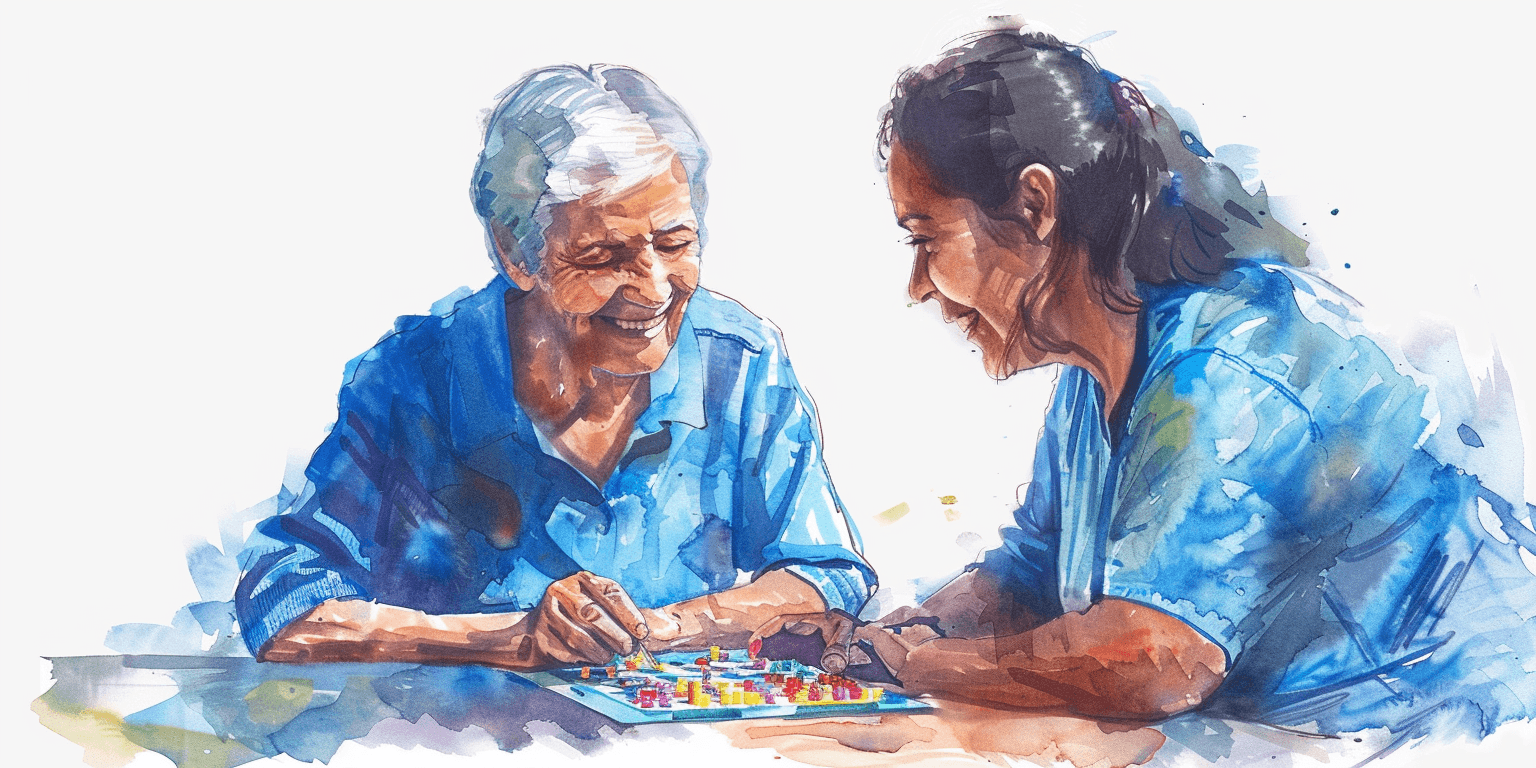

Stay Sharp, Stay Happy: Fun ways to keep our mind active as we age!



Neelam Dabholkar, MBA


Nutrition Tips for Seniors at Home



Jon Levinson
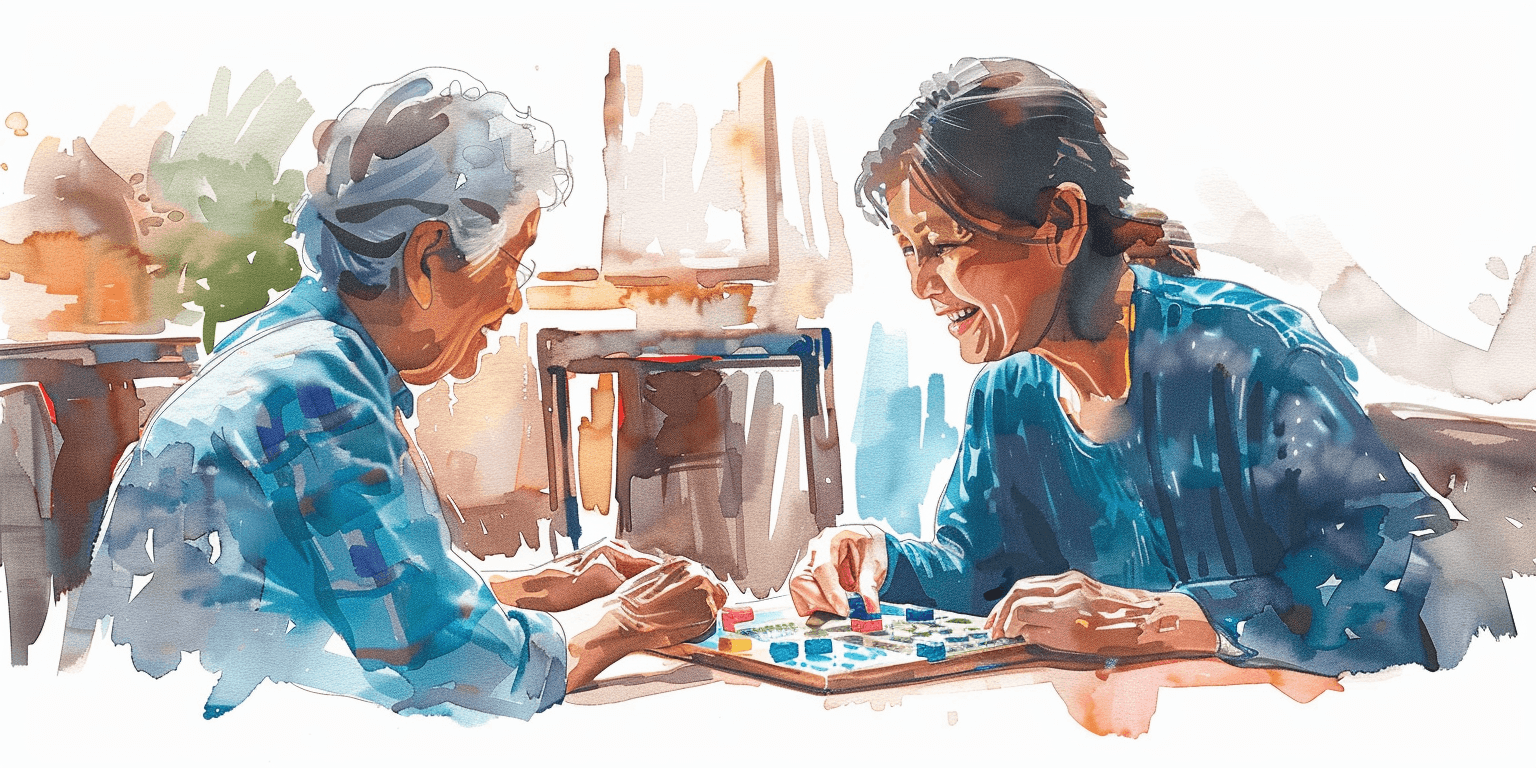

How In-Home Senior Care Supports Independence



Lowrie Hilladakis


Building a Support Network: How Families Can Strengthen Connections for Seniors



Vanessa Bustos
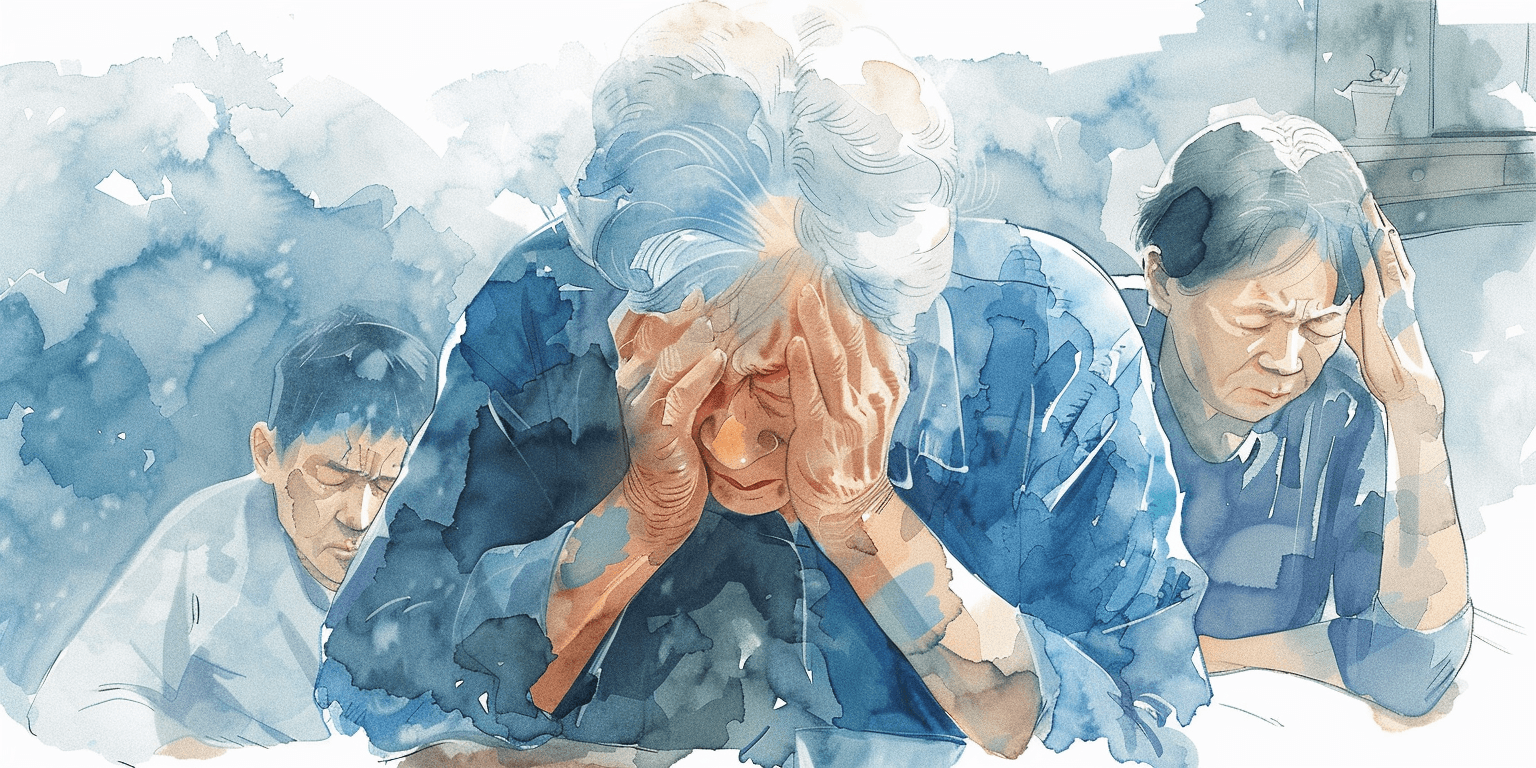

Preparing for Emergencies: Building a Watertight Senior Care Plan



Ian Gillis
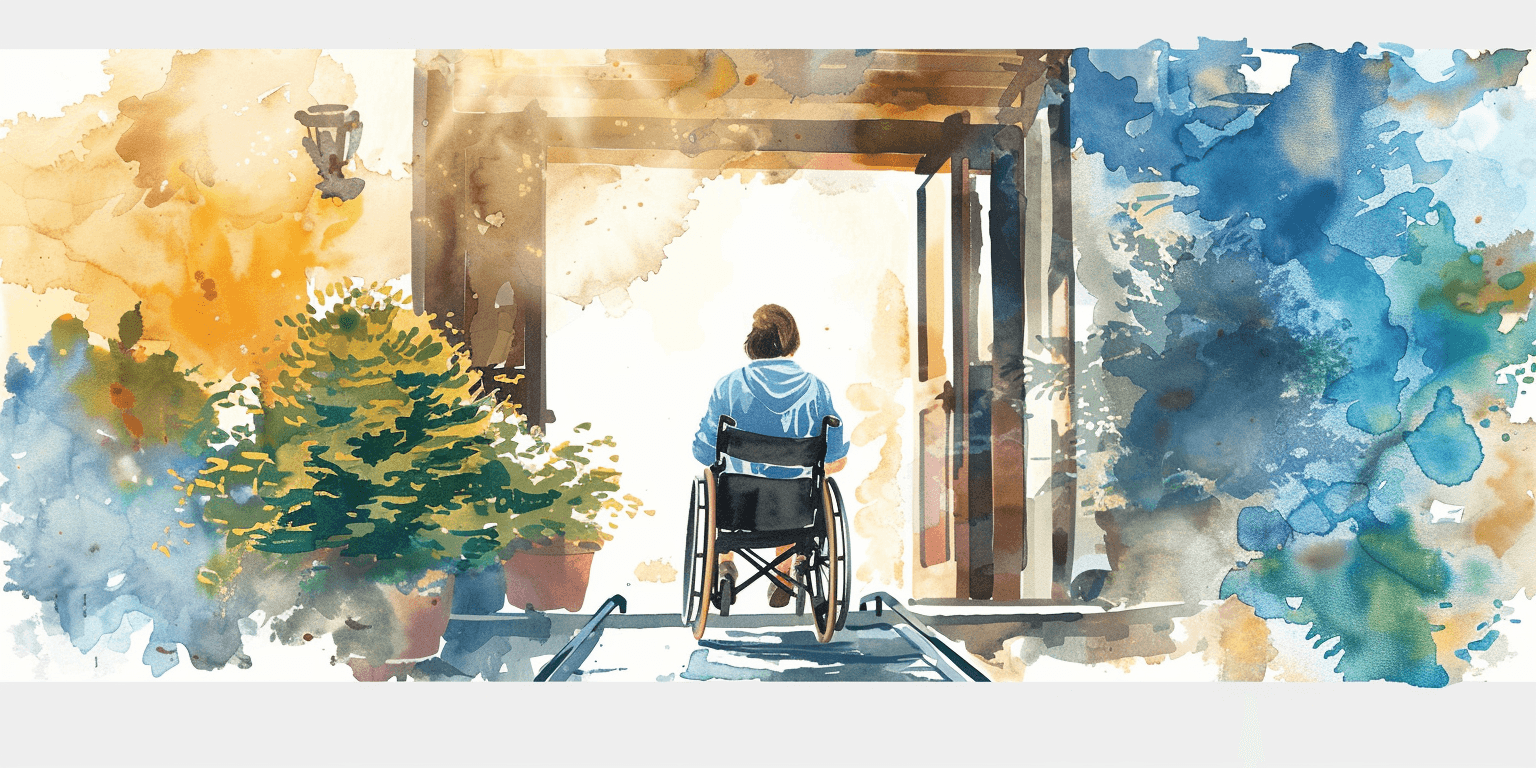

Adapting to Aging: Home Modifications That Make a Difference



Quynh Thi Pham, OTS


The Importance of Physical Therapy in Post-Acute Care



Renée Markels


Aging Policy Landscape: What We Learned



Lowrie Hilladakis


Home Safety Ideas for Seniors



Vanessa Bustos


What is Occupational Therapy For Seniors and Why Is It Important?



Quynh Thi Pham, OTS
GEt started for free
Better care starts with Clara.
Find, hire, and pay top-notch caregivers without the headache for a price that fits your budget.

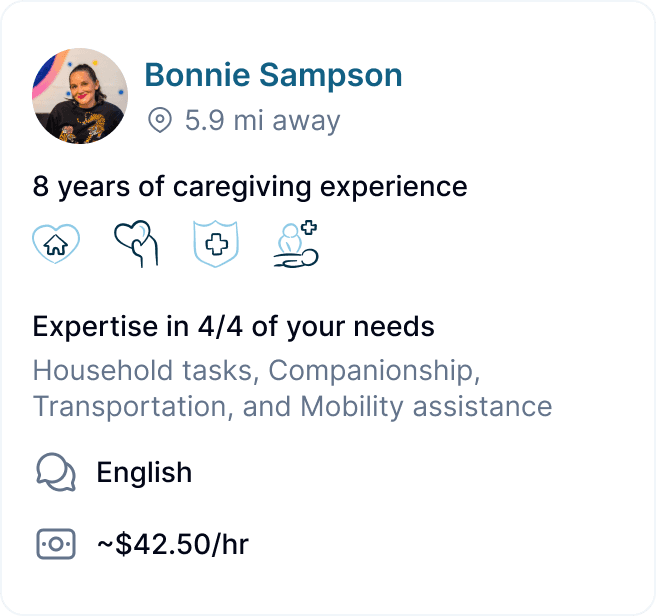
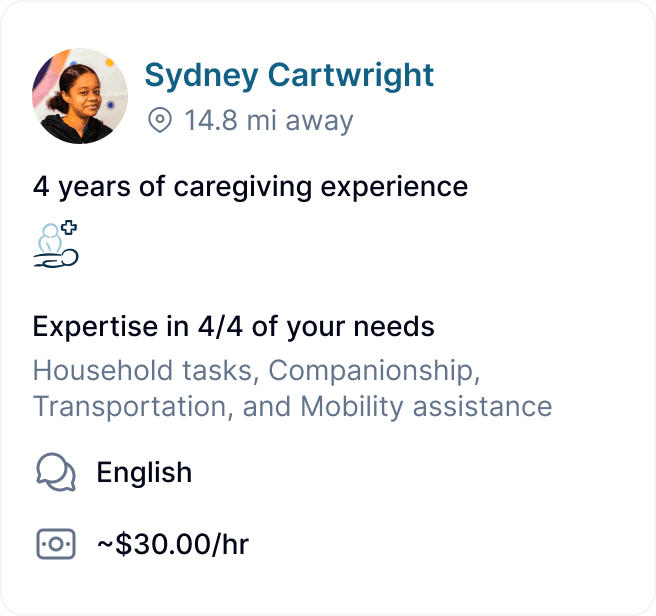
GEt started for free
Better care starts with Clara.
Find, hire, and pay top-notch caregivers without the headache for a price that fits your budget.



GEt started for free
Better care starts with Clara.
Find, hire, and pay top-notch caregivers without the headache for a price that fits your budget.

